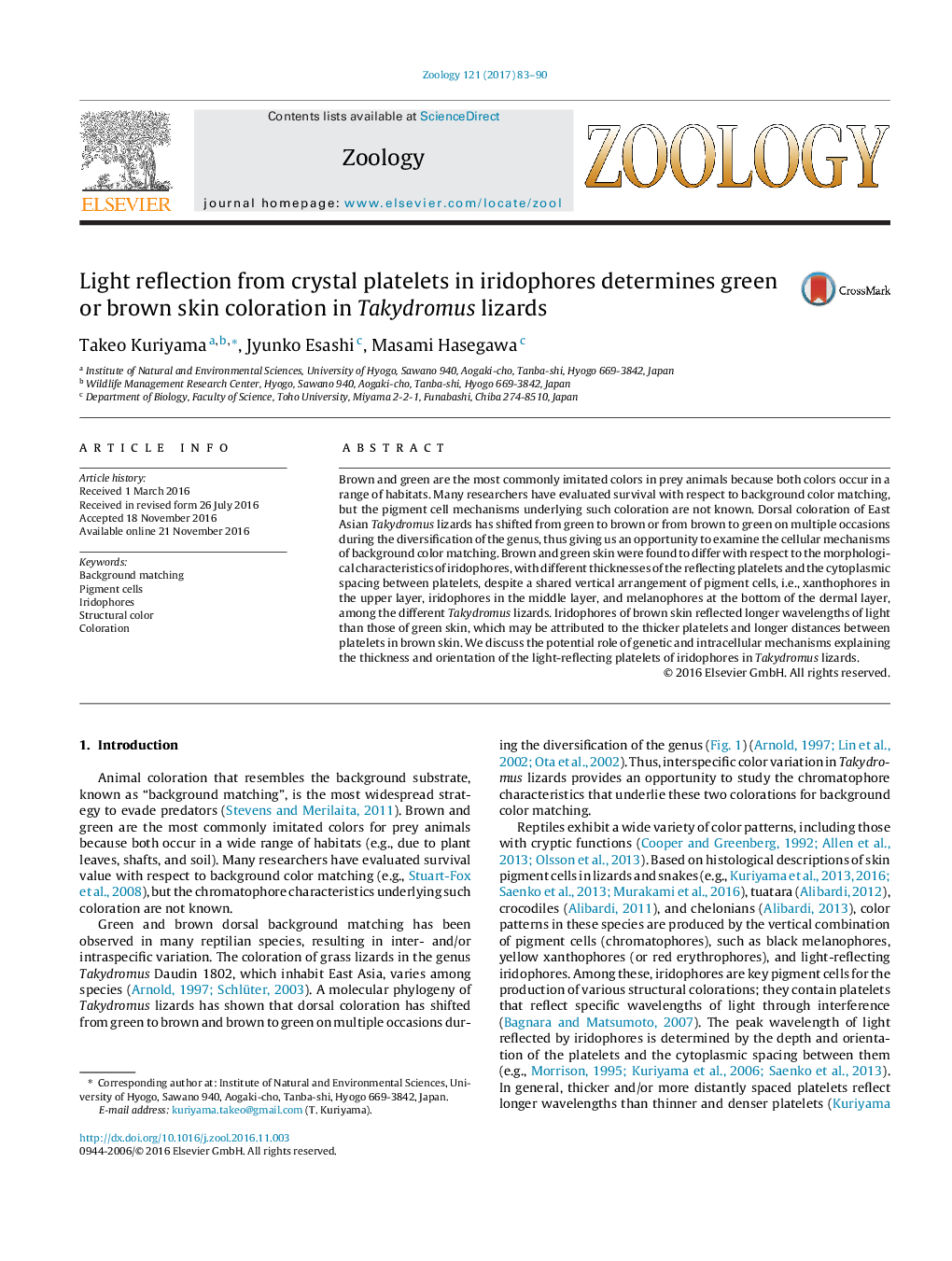| Article ID | Journal | Published Year | Pages | File Type |
|---|---|---|---|---|
| 5586564 | Zoology | 2017 | 8 Pages |
â¢Light-reflecting platelets in iridophores determine green or brown skin coloration in Takydromus lizards.â¢Iridophores in brown skin reflect longer wavelengths than those in green skin.â¢The vertical arrangement of xanthophores, iridophores, and melanophores is the same in lizards of both colors.
Brown and green are the most commonly imitated colors in prey animals because both colors occur in a range of habitats. Many researchers have evaluated survival with respect to background color matching, but the pigment cell mechanisms underlying such coloration are not known. Dorsal coloration of East Asian Takydromus lizards has shifted from green to brown or from brown to green on multiple occasions during the diversification of the genus, thus giving us an opportunity to examine the cellular mechanisms of background color matching. Brown and green skin were found to differ with respect to the morphological characteristics of iridophores, with different thicknesses of the reflecting platelets and the cytoplasmic spacing between platelets, despite a shared vertical arrangement of pigment cells, i.e., xanthophores in the upper layer, iridophores in the middle layer, and melanophores at the bottom of the dermal layer, among the different Takydromus lizards. Iridophores of brown skin reflected longer wavelengths of light than those of green skin, which may be attributed to the thicker platelets and longer distances between platelets in brown skin. We discuss the potential role of genetic and intracellular mechanisms explaining the thickness and orientation of the light-reflecting platelets of iridophores in Takydromus lizards.
